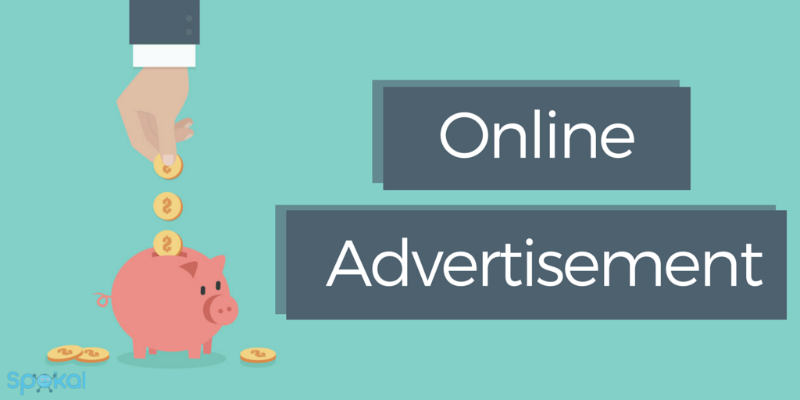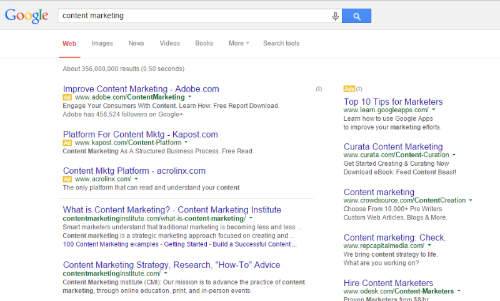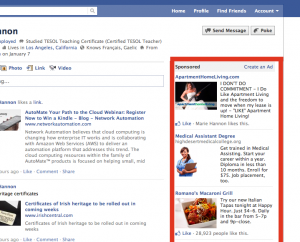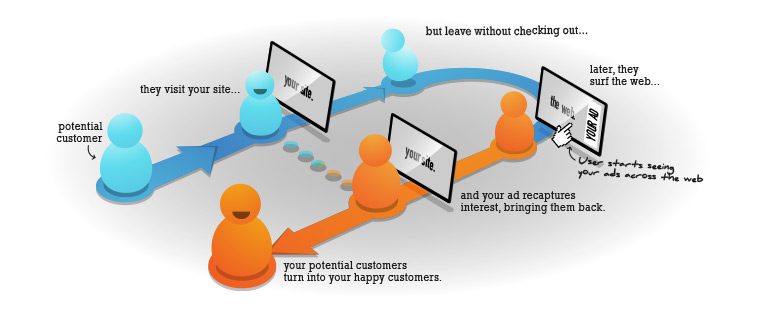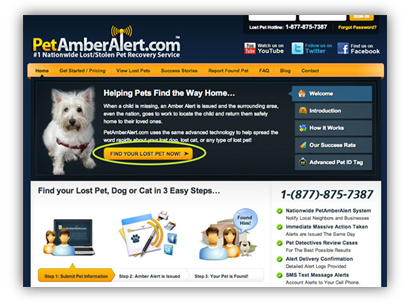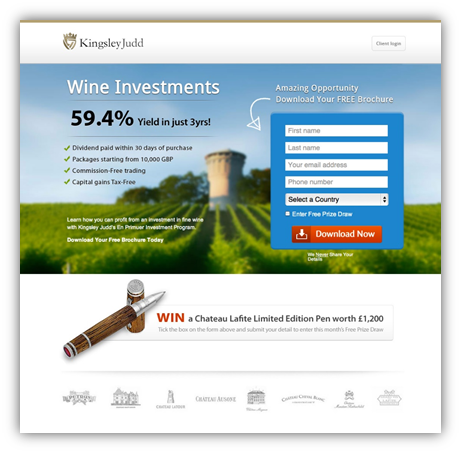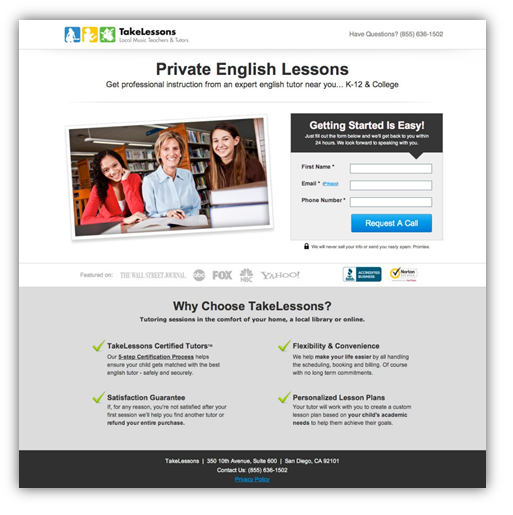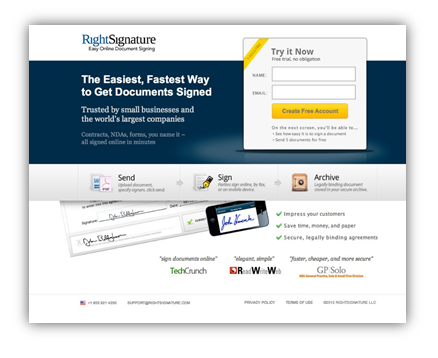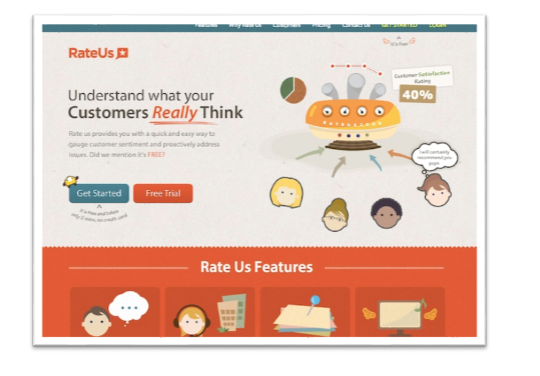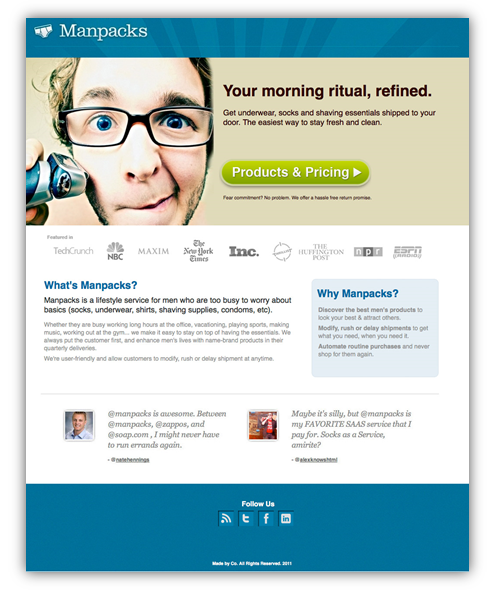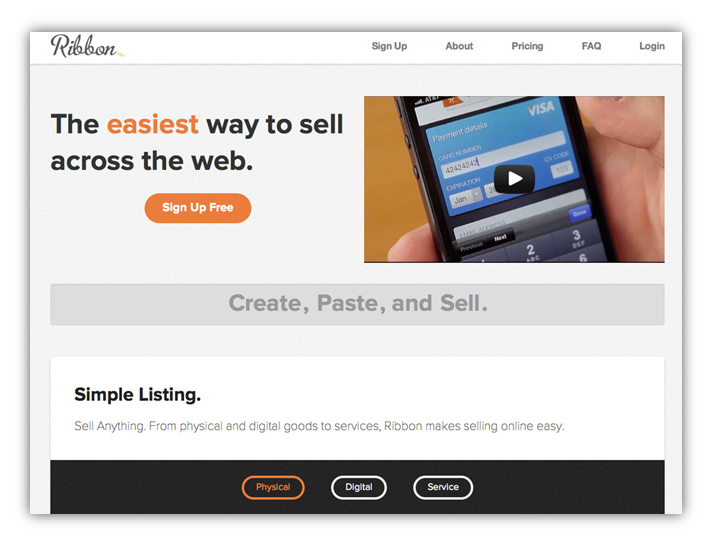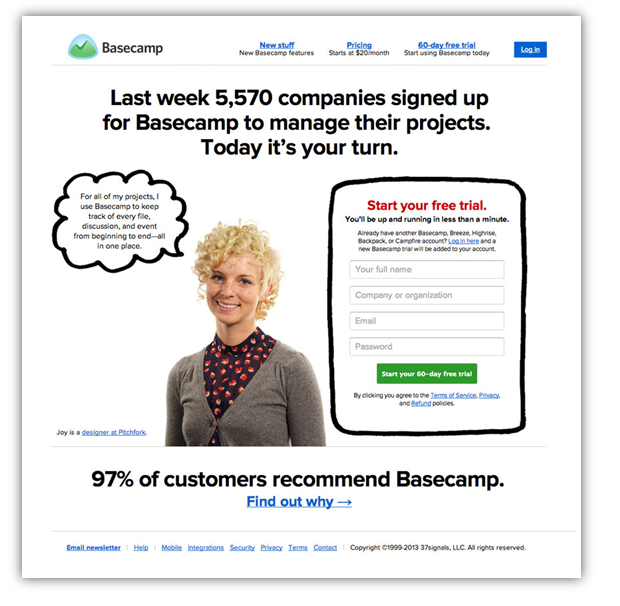You’ve probably come across the term “online advertising” before in some form or another. It’s sometimes referred to as Search Engine Marketing (SEM), paid channel marketing, or pay-per-click (PPC) marketing. The terms are often used interchangeably to describe what is essentially the same concept – purchased or “rented” traffic through online ads.
Online advertisement is a billion dollar industry, with digital ad spending worldwide hitting $137.53 billion in 2014 and accounting for one-quarter of total media spending.
I know, it’s crazy money, right? But the question is, is it effective?
- In 2013 the top three video ads generated a total of more than 12 million shares
- Twitter delivered 400% the revenue per visit in 2013 than it did in 2011: 44 cents versus 11 cents.
- The average click-through-rate for Facebook Ads has jumped 275% since 2012.
(Source for statistics: Wishpond)
Clearly, paid advertising can be effective.
But we also have to keep in mind that it is only rented advertisement. Once you run out of money to put the ads up, the traffic will stop coming in. Moreover, if you’re not smart about your online advertising, there is a high-risk that you might actually lose money on your investment.
However, online advertisement is also very attractive because it’s measurable, and highly sophisticated with regards targeting. This means that it’s actually possible to calculate both a long-term and short-term value for how much revenue resulted from each and every incoming website visit. And it’s also possible to target a very specific part of your demographic for more effective marketing.
So what kinds of online adverting options are out there? The 2 most popular are CPM and PPC types.
Paid Channel Pricing Models
CPM
CPMs are billed at a flat rate per 1,000 “impressions”. An impression is a measure of the number of times an ad is displayed or has left an impression on a user, regardless if it was actually clicked on or not. You’re not charged additionally for any clicks that the ad receives.
CPMs are usually display ads (meaning that they are visual), but not always.
Strengths:
- CPM rates are usually pretty inexpensive.
- It’s easy to apply a budget that makes sense for you since you’re paying only for a certain amount of views, which gives you more control over how much you spend.
- CPMs guarantee that your ad will be shown the number of times that you want it to be seen.
Weaknesses:
- If people don’t click on your ads and convert to customers, you risk overspending.
- It’s difficult quantify the return of your traffic buy until the end of the campaign.
- Rush of resulting web traffic is uncommon. Actually, it’s so uncommon that you are more likely to complete NAVY SEAL training than click a banner ad.
Pay per click (PPC)
PPC (also known cost per click or “CPC”) do exactly what they say on the tin: They’re ads that are paid for only when someone actually clicks on them. This means that you don’t pay if nobody sees your ads, and even when they do see your ad, you don’t pay unless they actually click on it. These ads are usually shown in text form, possibly with a smaller image.
The price that you pay per click is determined by the marketplace value of the keyword or expression you’re interested in. This is calculated by your ads quality score and the competition for said keyword you want to target.
Strengths
- Unlike impressions, clicks are extremely straightforward to track. Someone either did or didn’t click on your ad.
- You only pay for the clicks you need.
- There’s less of a risk for overspending on ads that aren’t converting, because you’re only paying for traffic that’s actually directed to your site.
- You’re able to place budget caps on traffic coming in through large networks (again, so you don’t overspend).
- CPCs and budgets are modifiable in real time.
- Well-optimized PPC campaigns can bring in significant traffic.
- For marketers who track ROI, PPC advertising can be a much more cost-effective way to get traffic than CPM.
Weaknesses
- Because you’re competing with other advertisers for traffic, this can sometimes cause PPCs to become expensive and unaffordable.
- But, if you’re not bidding with a competitive PPC, it’s possible that you won’t get any traffic.
- Just because a click didn’t convert to a paying customer straight away, doesn’t mean that they might not become one later on. Attribution models must be able to handle this accurately.
- It can be complicated, and you really need to know what you’re doing to see an ROI.
- You might lose money at the start, before you optimize over time.
- Just because someone clicks on your ads, doesn’t mean that they have any interest in your offer. 50% of clicks on static mobile banner ads are accidental.
CPA and Revshare
Less common forms of online advertising include CPA and Revshare models. CPA (cost per acquisition) is a model of online advertising where advertisers only pay per lead is generated. Revshare, where you receive a portion of the profits from the client you’re referring.
Retargeting
Retargeting (also known as remarketing) can also be a very effective marketing strategy, but your site has to have a decent amount of traffic (at least 5k visitors a month) in order for it to be effective.
Retargeting works off of cookie-based technology that uses simple a Javascript code to anonymously ‘follow’ your audience all over the Web. The code (or “cookie”), which is unnoticeable to your site visitors and won’t affect your site’s performance, is dropped on each new visitor that comes to your site. Later, when your cookied visitor is browsing the web, the cookie let’s your retargeting provider (Retargeter & Adroll are the popular choices) know when to serve ads. This ensures that your ads are served only to those who have already visited your site, and are therefore more likely to be interested in your offer.
Retargeting can be even more effective than PPC, so it’s definitely an option to consider if you’re website gets plenty of traffic.
How To Choose The Right Ad Network
Choosing the right ad network is tough, and what works for one business, might not work for another. In order to figure out which network will work best for you, answer the following 3 questions:
1. What Are The Available Targeting Options That You Need?
The first step to figuring out which ad network is right for you, is clarifying what are the targeting options that matter most to you.
- What is most important to you, demographic targeting or interest-based targeting? (or both?)
- Will this ad network help you reach your target audience with the right marketing message at the right time?
- Are you marketing towards B2B or consumers?
2. How Does The Ad Network Align With User Experience?
How do you want to be introduced to your target audience? Different user experiences of your ads will result in different amounts of success. So, for example:
- Search advertising through Google AdWords and Bing is more targeted, and can help you reach consumers based on keywords they’re researching online.
- Facebook ads allows marketers to show ads that drive awareness about new businesses, services, or products.
- LinkedIn ads target professionals by interest or job title as they’re browsing through feeds, job listings, or groups.
3. Is The Ad Format Appealing To You?
- Are the ad formats likely to inspire user engagement?
- Do available ad formats give your marketing team the ability to tell its story in a clear and compelling way?
- Do available ad formats align with your brand’s needs?
- Unattractive ads will generate a negative user experience, costing you time and money. Don’t jump into an ad network because you feel like “everyone’s doing it.” Choose ad products and features that create the best user experience possible.
A Note On Ad Network Reputation:
We all know that the internet is filled with all types of shady and dark corners intent on “playing the system” rather than partaking in it, and it’s best to avoid these when it comes to ad networks too.
If an ad network looks too good to be true, it probably is. ‘Cheap web traffic’ usually has a catch, or won’t give you any decent traffic that actually converts, so make sure that you’re always working with a reputable web traffic partner.
Ad Networks
Here’s a quick summary of 5 ad networks to give you an idea of what ones will work best for you:
- LinkedIn: For B2B marketing mostly.
- Facebook: Ads work like display ads, and are best for top-of-funnel marketing.
- StumbleUpon: Seriously amazing content that grabs the user immediately.
- Google Adwords: Offers CPC ads and can be highly targeted.
- Bing: Similar to Google Adwords, but with less competition.
These are but a few of the ad networks out there that are considered effective, but there are plenty of trustworthy alternative ad network sites too.
Important Paid Advertising Concepts You Should Know
When you’re going into paid advertising, it’s important that you go in with a strategy and a goal in mind. Understanding a few of the key concepts of online advertising is key to creating a strategy that will suit your business.
Behavioral Targeting
Behavioral targeting is when advertisements are targeted at users based on their past purchase activity. For example, you might target a user with ads about invitations for an event after they purchased some save the dates from you (yes, that is exactly what just happened to me!).
CPC/CTR
The cost you pay per click (CPCs) often decreases the higher an ads CTR (click through rates) is. When it comes to auctioning for keywords or expressions in online auctions, the highest CPC isn’t always the winner.
Day Parting
Day parting is a feature that is sometimes available that allows you to specify what time of the day an ad is to be shown.
Geotargetting
Geotargeting is often used for businesses that are more geographically relevant. Geotargetting allows you to target your advertisements to audiences in a particular country, state, city, or metropolitan area.
Interest-based targeting
This is the ability to advertise to customers with a specific interest or hobby.
Match Types
Keyword match types control which searches or terms will commence your ad.
Broad match will show your ad to a wide audience, phrase match will ensure that your ad is part of a searched expression, and exact match will only show your ad to people who search your exactly keyword.
Quality Scores
Quality Scores are rating on how well your advertisements align with your marketing message/landing page/offer. Quality scores are particularly important to Google, and they reward higher quality scores with lower CPCs (i.e. cheaper web traffic). This incentivizes advertisers to show high quality ads.
Creating Landing Pages That Convert
Regardless of which ad network you choose, to make any online advertising campaign work to the best of its abilities, you need to create some high-converting landing pages.
You don’t want to just have people visit your page, you want them to take some kind of action once they’re there. To do this, you need to create a landing page that’s engaging and compelling enough to convince them to take the step that you want them to!
To do this you need to follow Kissmetrics’ C.O.N.V.E.R.T.S. formula:
C = Clear Call to Action
O = Offer
N = Narrow Focus
V = VIA: Very Important Attributes
E = Effective Headline
R = Resolution-Savvy Layout
T = Tidy Visuals
S = Social Proof
Clear CTA
Your CTA (call-to-action) is the button whose job it is to drive the user to take action, so it’s vitally important to how successful your landing page performs.
What makes a great CTA? Value + Relevance. A CTA should make it clear what value you’re offering your prospective customer, and it should also be relevant to your website/landing page (i.e. not generic).
For example, Pet Amber Alert’s CTA is “Find Your Lost Pet Now!” The value = finding your lost pet. The relevance = the idea behind visiting the site is to find a lost pet, and the CTA reiterates that.
Offer
An offer is anything you give your visitors in exchange for getting them to take the action that you want. This is usually a discount/coupon, a free trial, a free downloadable whitepaper etc.
Kingsley Judd offers a “FREE brochure” for those who fill in their contact form (and a bonus entrance into a competition just for ticking a box!) The offer is compelling, and makes the payment (contact details) seem like a good deal.
Narrow Focus
The more choices you offer people, the more time they’ll take to make a decision. Make their decision for them by having a narrow focus.
Keep your landing pages simple, and only focus on 1 thing at a time.
This TakeLessons landing page, for example, focuses on one thing and one thing only: Private English Lessons. There is only one choice in the landing page: To request a call from them or not.
Very Important Attributes
You need to convince visitors that there’s a very good reason for them to do what you want, and to do this you have to highlight the best features of your product. It’s important to prioritize that these really are the very important attributes of what you have to offer because you don’t want to add too much information to the landing page – just enough to convince them to want more information.
Right Signature do a fantastic job of this with their “send”, “sign” and “archive” information. These are the very important attributes of the product, and while there may be other attributes, they’re not as vital to the product as these 3.
Effective Headline
Create clear and informative headlines that clearly articulate what your business is actually all about. No one wants to land on a landing page that can’t tell them even the most basic details.
At first glance at this landing page, we know exactly what Rate Us does: They help you understand what your customer really think!
Resolution-Savvy Layout
People surf the web on all types of different devices nowadays, so make sure that your layout allows for the wide variety of different user experiences by keeping the most essential parts of your message (i.e. the logo, headline, call to action and the supporting visual) in the center top of the screen. This means that even if your landing page is cut off my small screen resolutions, the important information will still be above the fold.
As you can see, Manpacks does a great job of this. All primary information is at the top, and secondary info is pushed to the bottom.
Tidy Visuals
As with your headlines, you want to make sure that you have one simple visual that your user will see. Unappealing, low-quality, or too many visuals will distract from your message.
Ribbon keep it nice and simple with just one visual to the right of their CTA and headline.
Social Proof
Humans are social creatures, and we tend to listen to our neighbors, friends and strangers more than we do a business. This is why testimonials, reviews and user-numbers are all super effective in convincing others to hop on board!
See how Basecamp combines both a testimonial and user numbers as social proof that their service is awesome:
Conclusion
Paid traffic acquisition is an extremely viable marketing channel, but it comes at a price (literally). Online advertisement can be highly effective in driving short-term traffic, but you should always remember to start small and test out what works for you. Don’t put all your eggs into one basket.
Instead, think of paid advertisement as a short-term way to boost your website traffic, but not as a central strategy. Instead, focus on marketing strategies that will work for you in the long-term, such as consistently providing valuable content, keeping your website updated and easy to use, offering a great product or service, and ensuring that people can find your content through SEO.
Liked this post?
 We have tons more like it. Oh, and guides... and templates... and tips on how to gain followers on Twitter... and an A-Z dictionary of online marketing terms. I know, we're spoiling you, but it's only because we love you!
We have tons more like it. Oh, and guides... and templates... and tips on how to gain followers on Twitter... and an A-Z dictionary of online marketing terms. I know, we're spoiling you, but it's only because we love you!
Spokal’s 10 Part Content Marketing Series
- Introduction to Spokal’s 3 Pillars of Inbound Marketing (Content Marketing Series Part 1 of 10)
- Content Marketing: The Lifeline of Your Online Business (Content Marketing Series Part 2 of 10)
- The 8 Key Factors in Creating Great Content (Content Marketing Series Part 3 of 10)
- Website Usability and On-Page SEO (Content Marketing Series Part 4 of 10)
- A Guide To Off-Page SEO (Content Marketing Series Part 5 of 10)
- The Ins & Outs Of Social Media Marketing (Content Marketing Series Part 6 of 10)
- A Beginner’s Guide To Paid Online Advertising (Content Marketing Series Part 7 of 10)
- How to Get them from Browsing to Buying: Lead Nurturing (Content Marketing Part 8 of 10)
- The Art of Creating Compelling CTAs (Content Marketing Series Part 9 of 10)
- The Beginner’s Guide To Email Marketing (Content Marketing Series Part 10 of 10)
